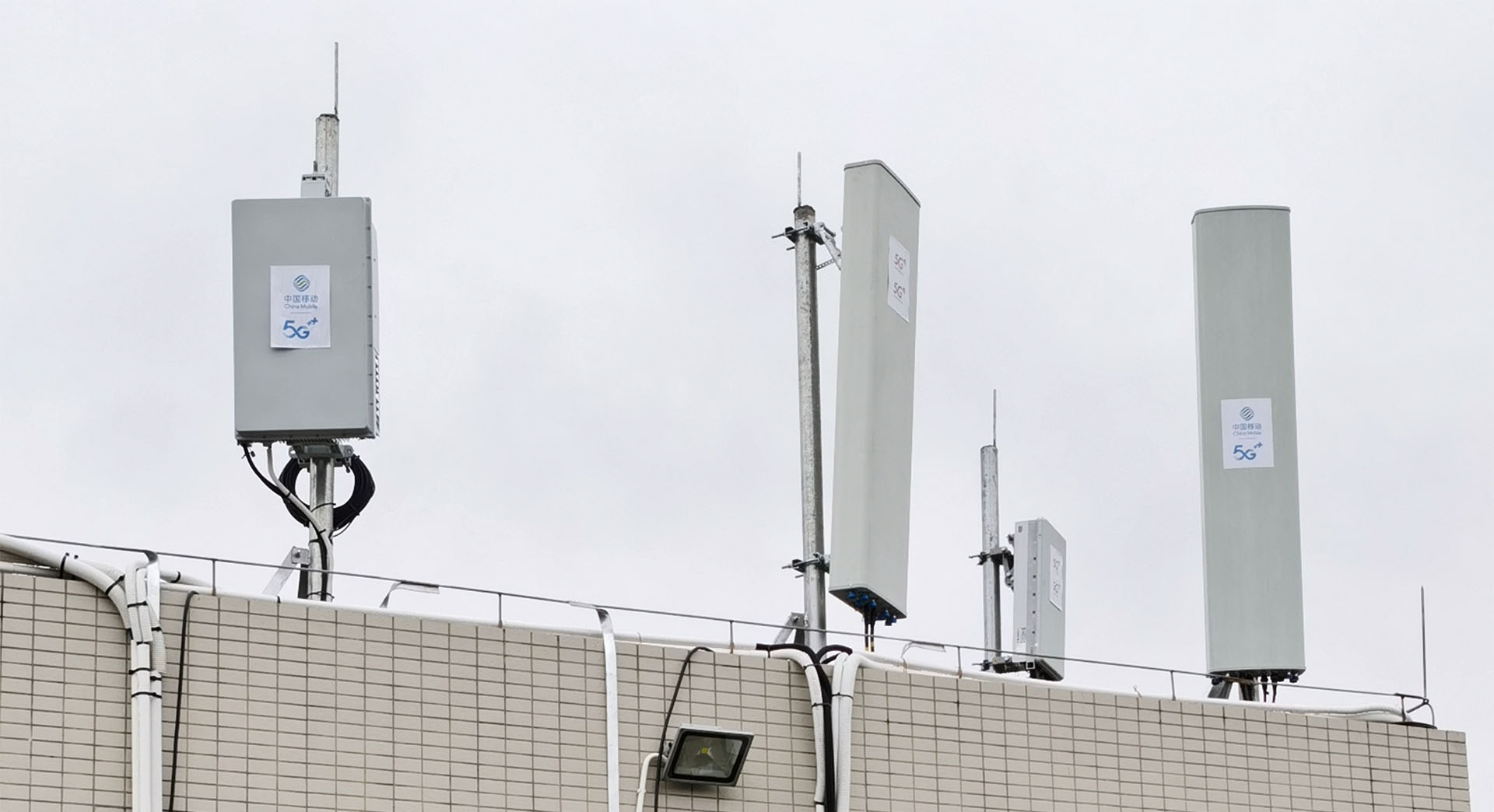5g base station is composed of BBU and AAU. One base station is configured with one operator's three cells (1 BBU + 3 AAU). Assuming that the power consumption of 5g BBU is 350W and that of AAU is 1100W, relevant power matching calculation is carried out.

1. battery capacity estimation
The calculation formula of battery capacity is simplified as follows:
Q=K*(P1*T1/ η+ P2*T2/ η)/ forty-three point two
Where:
Q - battery capacity (ah);
K - safety factor, taken as 1.25;
P1 - actual working power of communication equipment at primary power down side (W);
P2 - actual working power of communication equipment at secondary power down side (W);
T1 - Total standby time of primary power down side equipment (H), usually 3 hours;
T2 - Total standby time of equipment at secondary power down side (H), usually 10 hours;
η— Discharge capacity coefficient: 0.75 for 3 hours and 1.00 for 10 hours;
43.2 - minimum allowable discharge voltage of battery pack
Parameter interpretation:
The DC distribution circuit of the base station can be divided into primary power down and secondary power down. The primary power down side communication equipment refers to the base station equipment, and the secondary power down side communication equipment refers to the transmission equipment and monitoring equipment.
When the mains power is cut off, the battery pack begins to discharge and continues to supply power to the base station equipment and transmission equipment. However, due to the limited capacity of the storage battery, at a threshold value, the power supply of the base station equipment with greater power consumption will be cut off, and only the transmission equipment and monitoring equipment with less power consumption will be retained, so that the storage battery can continue to work for a long time, so that the maintenance personnel can have time to arrive for power generation emergency treatment. At this time, it is called primary power down. When the primary power down is completed and the transmission equipment and monitoring equipment work for a period of time, in order to protect the battery, the power supply of the transmission equipment will be terminated, which is called secondary power down.
This paper assumes that under the configuration of one BBU + three AAUs, the power consumption of base station transmission and monitoring equipment is 500W, that is, P2 is 500W.
Then calculate P1, 1 * BBU power consumption + 3 * AAU power consumption = 1 * 300W + 3 * 1100W, that is, P1 is 3650w.
Therefore, according to the battery capacity calculation formula,
Q=1.25*(3650*3/0.75+500*10/1)/43.2=567(Ah)。
In other words, after a set of 5g base station equipment (1 BBU + 3 AAU) is added at the base station, a set of 500ah storage battery shall be added accordingly.
2. Estimation of switching power supply configuration
The total capacity of rectifier equipment shall be determined by the sum of load current and balanced charging current of storage battery. The calculation method is as follows:
I total = I negative + I storage
I total: switching power supply capacity, I negative: load current for communication, I storage: battery charging current.
Where, I = q / T
Q: Battery capacity, t: Battery floating charge time, generally 10 hours.
The minimum allowable discharge voltage of the battery pack is 43.2v, I negative = total power consumption of the station / 43.2, where the total power consumption of the station is the sum of the power consumption of the base station equipment and the power consumption of the transmission and monitoring equipment.
I.e.: I negative=
(1*300W+3*1100W+500W)/43.2V=96A
I = q / T = 567 / 10 = 56.7 (a)
I total = I negative + I storage = 96 + 56.7 = 153 (a)
If the rectifier module is 50a, four rectifier modules need to be configured.
3. air conditioning configuration estimation
Total refrigerating capacity demand = indoor equipment power consumption + 150W / m2 * machine room area
Among them, 150W / m2 is the basis of heat load per unit area, and indoor equipment does not include outdoor AAU.
For a simple calculation, indoor equipment power consumption = BBU power consumption + transmission and monitoring equipment power consumption = 350 + 500 = 850 (W).
Taking the area of the machine room as 15 square meters as an example, the total cooling capacity demand of the machine room is 850 + 2250 (W), i.e. 3100w.
According to the calculation that 1p can produce 2.5kW refrigeration capacity, a 1.5p air conditioner needs to be added.
Generally, the power consumption of 1p air conditioner is 735w, so the power consumption of new 1.5p air conditioner is 1.1KW.
4.Estimation of capacitance in 4 cities
Mains power introduction capacity = (P communication equipment + P battery charging)/ η+ P air conditioning + P lighting + P others
Commercial power introduction capacity = (total equipment power consumption + battery charging power consumption)/ η+ Air conditioning power consumption + other power consumption
Among them, η For efficiency, general η Take 0.9. Other power consumption refers to lighting and other power consumption, which is taken as 500W in this example.
Battery charging power consumption = battery capacity * 54 * 0.1 (average charging current coefficient) = 500 * 54 * 0.1 = 2700W
Therefore, the introduction capacity of municipal power=
(4150+2700)/0.9+1100+500=9.2(KW)
From the above calculation, it can be seen that after adding a set of 5g equipment in the original station, the capacity expansion shall be considered from the storage battery, switching power supply to the introduction of external mains power.
Considering that the supporting base stations are uniformly constructed by the tower company and shared by China Mobile, China Telecom and China Unicom, 2-3 sets of 5g equipment need to be added to each site, and the corresponding capacity expansion demand will be doubled.